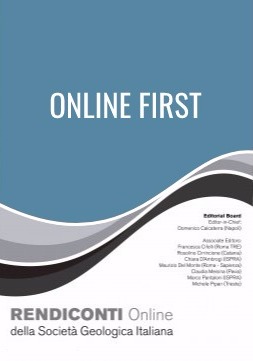

Piezometric level variations and ground deformations in the plain of the Sarno River (southern Italy)
Silvio Coda1, Domenico Calcaterra1, Delia Cusano1, Salvatore Davino2, Diego Di Martire1 & Vincenzo Allocca1
1Department of Earth Sciences, Environment and Resources, University of Naples Federico II.
2IdroGeo S.r.l.
Corresponding author e-mail: silvio.coda@unina.it
Volume: 66/2025
Abstract
Variations in piezometric levels due to natural and anthropogenic factors can cause vertical ground deformations, often with significant consequences for urban environments. This study investigates the pyroclastic-alluvial aquifer of the Sarno Plain (southern Italy) to analyze piezometric level changes and ground deformations at basin and local scales, covering the periods 1978–2021 and 1993–2020, respectively. A GIS-based hydrogeological database was developed, integrating piezometric and hydrostratigraphic data from literature, local archives, and new field surveys. Ground deformations were assessed using Differential Interferometry SAR (DInSAR) data from four constellations, with mean displacement rate maps and time series generated through the DInSAR technique. At the basin scale, four sectors showed the largest piezometric variations, with drawdowns exceeding -10 m and rises up to +8 m. Subsidence was prevalent across wide portions of the plain, with rates exceeding -10 mm/yr, while uplift occurred mostly in scattered, localized areas. In four selected areas—two experiencing piezometric drawdown and subsidence, and two with piezometric rise and uplift—time series comparisons highlighted a good correspondence between piezometric changes and ground deformation. Moreover, local hydrostratigraphic conditions influenced the deformative response, with the largest displacements observed under phreatic aquifer conditions and in areas with compressible peaty and clayey layers.
Keywords
Get Full Text